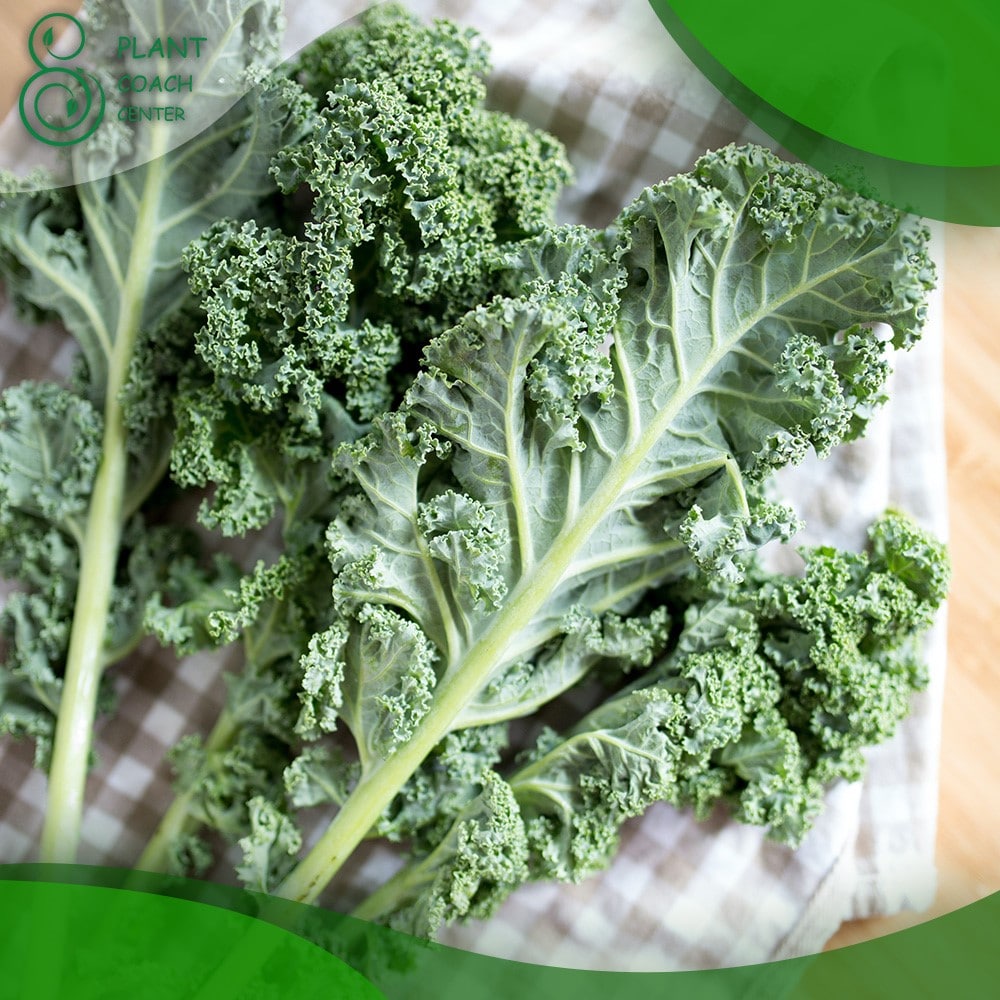When Do You Plant Kale?
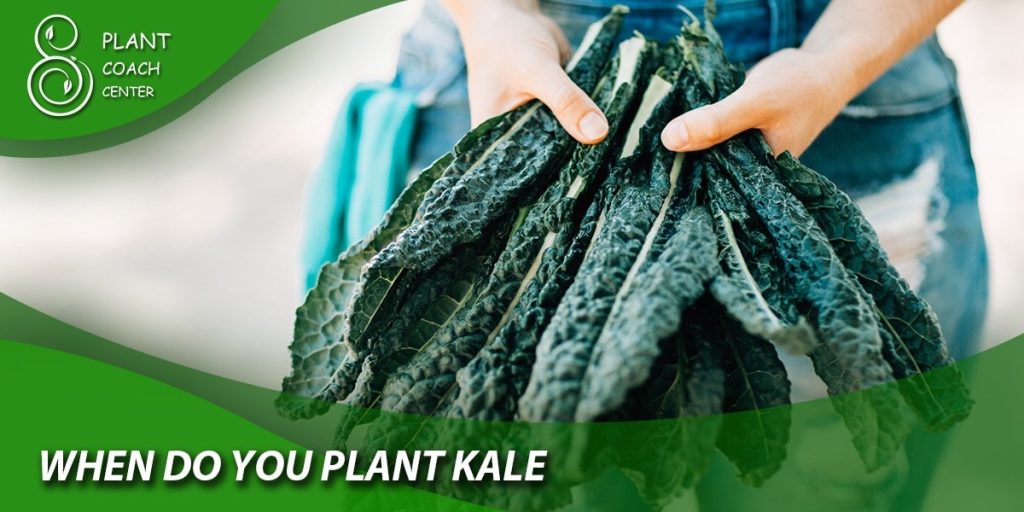
Welcome to the verdant world of kale cultivation! Whether you’re a seasoned gardener or just beginning to dip your toes into the joys of homegrown produce, mastering the art of planting kale requires a delicate dance with nature’s rhythms. With its diverse varieties and adaptable nature, Kale offers many possibilities for enriching your culinary creations and bolstering your garden’s greenery.
But the question remains: when do you plant Kale to ensure a thriving harvest? This fundamental query is the compass guiding us through the kale-growing journey. This article will embark on a horticultural exploration, unearthing the secrets behind Kale’s ideal planting times.
From deciphering the symphony of seasons to understanding the intricate choreography of temperature preferences, from sowing seeds with care to nurturing transplant darlings, we will equip you with the knowledge needed to cultivate Kale confidently. So, let’s dig into the kaleidoscope of timing and techniques, unraveling the tapestry of when and how to plant this remarkable leafy green.
Seasonal Symphony: Choosing the Perfect Time
In the kale-growing journey, timing is everything, and nature’s seasons play the role of a conductor, guiding the rhythm of your gardening endeavors. Each season offers a unique set of conditions and challenges that can influence the success of your kale crop.
Spring Serenade
As winter’s frost gives way to the warmth of spring, it’s time to embrace the rejuvenation of the garden. Spring is an excellent season for planting kale, especially in regions with mild winters.
The soil is gradually warming up, providing a welcoming environment for kale seeds or transplants. Early spring plantings can lead to a bountiful harvest before the heat of summer takes its toll.
Summer Crescendo
While Kale thrives in cooler temperatures, certain varieties can tolerate the summer heat. However, summer planting requires careful consideration of type and location. Opt for heat-resistant varieties and provide ample shade during the hottest parts of the day. Consider using summer to plan for a fall harvest in regions with scorching summers by starting seeds indoors or in a shaded spot outdoors.
Autumn Aria
For many gardeners, autumn is the star of the seasonal show for kale cultivation. As temperatures cool down again, Kale becomes incredibly flavorful and sweet. Planting Kale in late summer or early fall sets the stage for a fantastic autumn harvest. The cooler temperatures enhance Kale’s taste and texture, making it a sought-after addition to fall dishes.
Winter Whispers
In milder climates, the gardening season doesn’t necessarily end with the arrival of winter. Some kale varieties are hardy enough to withstand winter’s chill and can even thrive in frost and snow. You can create a winter wonderland of edible greens by planting Kale in late summer or early fall. Just be sure to provide adequate protection during the harshest cold snaps.
Chilling or Thriving? Understanding Temperature Preferences
Like Goldilocks seeking the perfect porridge, Kale has its own temperature preferences that can significantly impact its growth and flavor. Understanding these preferences is critical to a successful kale-growing venture.
Cold-Hardy Champions
Kale has earned its reputation as a cold-hardy vegetable, with certain varieties capable of enduring frost and snow. This resilience enhances Kale’s flavor, making it sweeter after exposure to cold temperatures.
Types like Siberian Kale and Winterbor can withstand chilly conditions, making them ideal choices for fall and winter planting. These frost-kissed leaves not only taste amazing but also boast enhanced nutritional value.
Warm Weather Woes
While Kale’s heart may belong to cooler temperatures, not all varieties appreciate the heat of summer. High temperatures can cause Kale to bolt, sending up flower stalks and negatively impacting its taste and texture. However, Kale should still be abandoned during the summer months.
Heat-resistant varieties like Lacinato (Dinosaur kale) can tolerate warmer conditions better than others. Additionally, shading techniques and consistent moisture can help prevent Kale from becoming stressed in the heat.
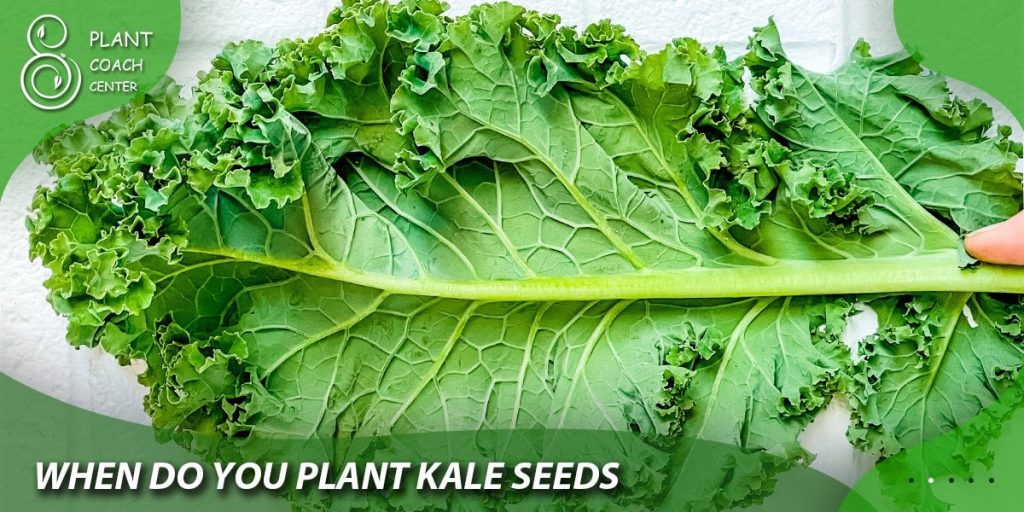
The Sweet Spot
To strike the perfect balance, consider the transition seasons—spring and fall. Spring offers cooler temperatures that promote gradual growth without the shock of winter cold, while fall provides a similar advantage, enhancing Kale’s flavor as the weather cools down.
Sowing for Success: Starting Kale from Seeds
The journey of cultivating Kale begins with a single, humble seed. Starting Kale from sources is a rewarding process that allows you to witness the plant’s entire lifecycle, from germination to lush foliage ready for harvest. To set the stage for a successful kale-growing adventure, follow these steps for sowing seeds and nurturing seedlings.
Seed Selection
Choose high-quality kale seeds from reputable sources. Kale comes in various forms, including curly, flat, and colorful. Select bases that match your culinary preferences and growing conditions.
Indoor Seeding
Start seeds indoors several weeks before your area’s last expected frost date. Use seed trays or pots filled with well-draining seed-starting mix. Plant seeds about ¼ to ½ inch deep, and moisten the soil.
Germination Conditions
Kale seeds typically germinate within 5 to 10 days under optimal conditions. Provide warmth and consistent moisture by covering the trays with plastic wrap or using a seedling heat mat.
Transplanting Outdoors
Once the seedlings have developed their second set of true leaves, they’re ready for transplanting outdoors. Harden off the seedlings by gradually exposing them to outdoor conditions over a week.
Outdoor Planting
Choose a sunny location with well-draining soil. Space the seedlings according to the variety’s recommended spacing, usually around 12 to 18 inches apart. Make sure to plant them at the same depth they were growing indoors.
Care and Maintenance
Keep the young plants well-watered and protect them from pests. Applying a layer of mulch can help retain moisture and suppress weeds. Regularly inspect the plants for signs of insects or diseases, and take appropriate measures if needed.
Harvesting
Depending on the variety, Kale can be ready for harvest in as little as 50 days after planting. Harvest the outer leaves by snipping them off at the stem. This allows the inner leaves to continue growing, ensuring a continuous harvest.
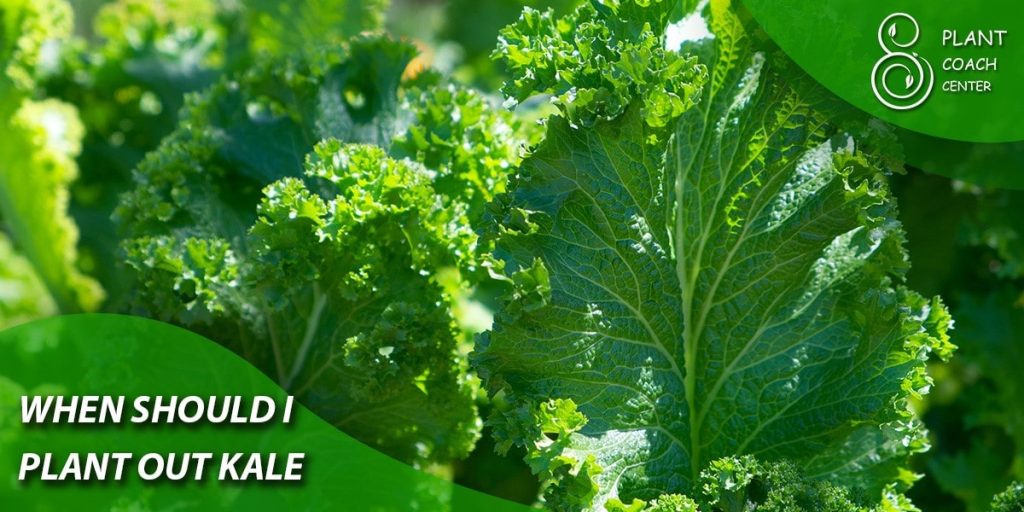
Ready, Set, Garden: Planting Kale Transplants
Planting kale transplants can be likened to welcoming new members into your garden family. These young plants have already taken their first steps toward growth, and it’s your role to provide them a nurturing environment that encourages their development into robust, leafy greens. Here’s a step-by-step guide to successfully planting and caring for kale transplants:
Transplant Selection
Choose healthy kale transplants from reliable sources or nurture your own from seeds indoors. Look for transplants with vibrant leaves, strong stems, and no signs of pests or diseases.
Timing
Plant kale transplants outdoors when the weather is mild, and frost danger has passed. Cooler temperatures are better for transplants as they establish themselves in their new environment.
Soil Preparation
Select a sunny location with well-draining soil enriched with compost or organic matter. Prepare the ground by loosening it to a depth of at least 6 inches and removing any weeds.
Transplanting Process
Gently remove the transplant from its container to avoid disturbing the roots. Dig a hole in the prepared soil slightly larger than the transplant’s root ball. Place the transplant in the hole at the same depth it grew in its container.
Spacing
Space the transplants according to the variety’s recommended spacing, usually around 12 to 18 inches apart. Proper spacing allows each plant to receive adequate sunlight, air circulation, and room for growth.
Watering
After planting, give the transplants a thorough watering to help settle the soil around their roots. Keep the soil consistently moist but not waterlogged during the establishment period.
Mulching
Apply a layer of organic mulch around the transplants. Mulch helps retain moisture, suppress weeds, and regulate soil temperature, creating an optimal environment for growth.
Care and Maintenance
Regularly inspect the transplants for signs of pests or diseases. Apply organic solutions if necessary to protect their health. Fertilize with a balanced, slow-release fertilizer to provide essential nutrients.
Harvesting
Depending on the variety, kale transplants can typically be harvested in about 40 to 60 days after planting. Harvest the outer leaves first to encourage continuous growth.
Microclimate Magic: Tailoring Planting Dates to Your Location
In the intricate dance of gardening, your geographical location wields a significant influence; within it lies the microclimate. This unique atmospheric pocket can diverge from the more critical regional climate. Understanding your garden’s microclimate is akin to possessing a hidden key that unlocks the secrets to successful kale cultivation. Here’s how to harness microclimate magic for optimal planting:
Identify Microclimates
Explore your garden space with a discerning eye. Notice areas that receive varying amounts of sunlight, wind, and temperature fluctuations. These microclimates can create distinct growing conditions even within a small space.
Warm vs. Cool Spots
Identify warm and cool microclimates. Warm spots, like south-facing walls or areas sheltered from prevailing winds, can offer an early planting advantage. Cool places, such as the shade of taller plants or structures, extend the growing season for cool-weather crops like Kale.
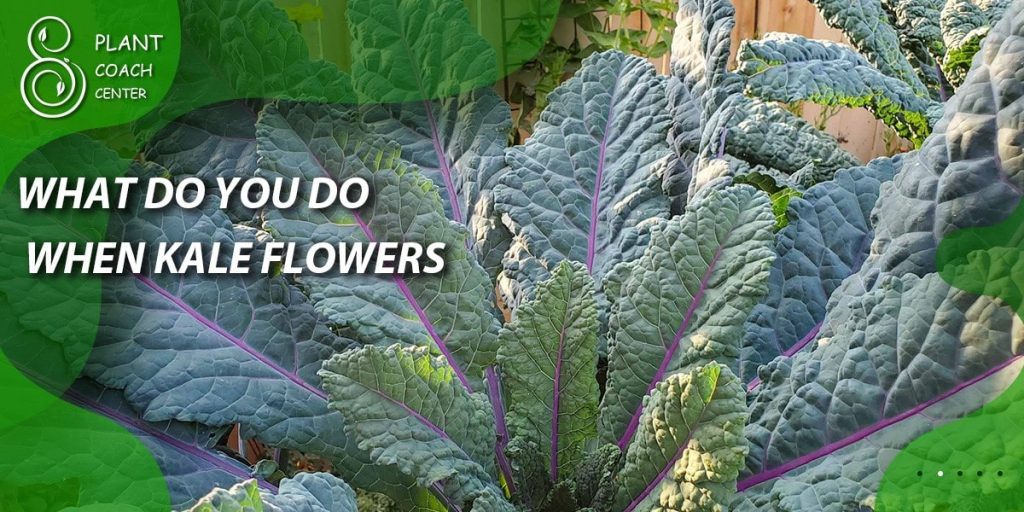
Experiment and Observe
Microclimates can be your experimental canvas. Planting Kale in different microclimates within your garden can reveal fascinating insights. Keep a garden journal to track growth patterns, pest presence, and harvest outcomes in each microclimate.
Extend Seasons
Microclimates can help you push the boundaries of traditional planting seasons. For instance, a warm microclimate might allow for earlier spring plantings, while a cool microclimate could support late-season harvests as temperatures drop.
Protecting Tender Plants
Utilize microclimates to shelter tender kale plants from harsh conditions. Placing them in more protected spots can shield them from unexpected frost or intense summer sun.
Utilizing Microclimate Tools
Cloches, row covers, and reflective surfaces can enhance microclimates. Cloches or protective covers can create mini-greenhouses, fostering warmer conditions for early planting.
Monitoring and Adaptation
Microclimates aren’t static. Keep a vigilant eye on changes in weather patterns and adapt your planting strategies accordingly. As seasons shift, so too can the effectiveness of different microclimates.
Extending the Kale Parade: Late Season Planting and Overwintering
As the gardening season gradually fades into the crisp embrace of fall and the first hints of winter, it might seem like the curtain is drawing closed on your kale-growing journey. However, with ingenuity and a dash of daring, you can extend the kale parade well into the colder months. Late-season planting and overwintering techniques open possibilities for enjoying fresh Kale even when the world outside is coated in frost.
Late Season Planting
When summer’s heat subsides, and the autumn breeze starts to whisper, seize the opportunity to plant another round of Kale. Opt for quick-growing varieties that can mature in cooler temperatures. You’ll set the stage for a vibrant fall harvest by sowing or transplanting seedlings in late summer.
Frost-Kissed Flavors
Kale’s charm deepens as temperatures drop. The cold encourages the plant to convert starches into sugars, resulting in sweeter and more flavorful leaves. Late-season planting allows you to savor the unique taste of frost-kissed Kale, adding a new dimension to your culinary creations.
Overwintering Strategies
Overwintering Kale can be a captivating endeavor for those in milder climates. Establishing sturdy kale plants before winter’s arrival creates the potential for a continuous harvest. Protect the plants with row covers, cloches, or cold frames to shield them from harsh weather.
Indoor Containers
If winters in your region are particularly fierce, consider bringing the Kale indoors. Planting Kale in containers and placing them near sunny windows can keep your harvest going throughout the colder months.
Frost-Tolerant Varieties
Certain kale varieties are more adept at enduring winter’s chill. Curly and Siberian kales, for instance, exhibit heightened cold tolerance. These varieties often thrive outdoors, even when the thermometer dips below freezing.
Vigilance and Care
Overwintering Kale demands a degree of vigilance. Regularly inspect your plants for signs of stress, and ensure they receive adequate water and nutrients. Removing damaged leaves can also help maintain plant health.
Conclusion
In the kale-centric odyssey we’ve embarked upon, we’ve unearthed the kaleidoscope of possibilities for choosing the perfect time for planting this versatile leafy green. From synchronizing with the seasons’ symphony to understanding temperature nuances, from nurturing seeds into seedlings to embracing transplants and microclimates, the kale journey is a testament to the art and science of gardening.
Whether you’re a novice with a newfound appreciation for microclimates or an experienced gardener pushing the boundaries with overwintering, the kale saga unfolds with each mindful decision. And as you traverse these horticultural landscapes, remember that the resources at plantcouchcenter.com stand as your evergreen companions, ready to provide guidance and inspiration throughout your gardening pursuits.
So, with nature as your guide and knowledge as your ally, may your kale patches thrive, your harvests flourish, and your plates brim with the vibrant colors and flavors of this remarkable leafy companion.
Can I plant Kale in the summer?
Choose heat-resistant varieties and provide shade during peak heat.
What's the best time to start Kale from seeds indoors?
Start seeds indoors a few weeks before the last frost date for a head start.
Can I grow Kale during winter?
Certain varieties can withstand frost, and overwintering techniques extend the harvest.


